19 Aug International SEO Guide for Ecommerce: Optimizing Your Online Store via @lorenbaker
Effectively configuring and localizing your online store is key if you want to start ranking and selling in other countries and languages.
For her SEJ eSummit session, Aleyda Solis, International SEO and Founder at Orainti, walked through critical steps, as well as the do’s and dont’s of international SEO for ecommerce websites.
She also provided actionable tips and tools for the most popular ecommerce platforms.
Here’s a recap of her presentation.


Selling abroad can be a great way to diversify your ecommerce business and scale your shop revenue.
There’s an important ecommerce organic search traffic opportunity outside the U.S.
You can use SimilarWeb or SEMrush to identify what is the traffic volume that digital players are already attracting in those international markets where you are looking to compete.
There are also tools like Google Market Finder that will suggest potential opportunities abroad based on your own specific characteristic and industries.
Considerations When Going Global
The best course is to do appropriate validation and analysis and research with your own data.
Define what is the potential traffic volume from these international countries.
Make sure that you have the internal capacity to actively support this type of audience and consider the operational type of capability to send your products and handle multiple currencies.
There are a lot of factors here that are beyond SEO.
It is critical to verify and validate that the potential traffic or conversions that you will be able to attract from these countries will end up generating positive results considering the difficulties, costs, challenges, and investments.
You should take into consideration your own expected ROI and prioritize them while delivering the best localized search experience in a language you don’t speak.
If the assessment is positive, then you should definitely go abroad to diversify and grow your online store.
If it isn’t feasible at the moment, you can still make preparations for the future:
- Buy and secure your ccTLDs for future activity.
- Create custom alerts so that you are notified whenever you reach a certain point where you can already identify that it might be worth it to target new markets.
- Test selling in existing marketplaces and see how the audiences behave.
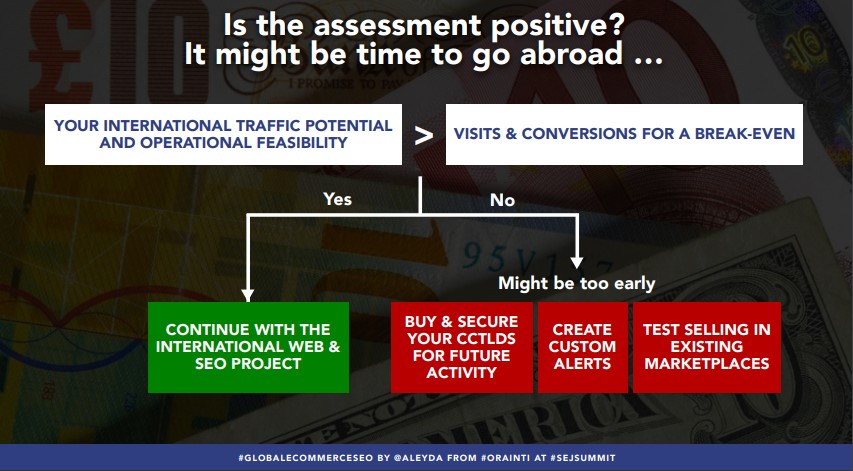

Common International SEO Implementation Challenges
When getting started with a global ecommerce project, you need to tackle the most common international SEO implementation challenges.
- What’s the best international web structure to target new markets?
- How do you scale localization of categories and products with little resources?
- How do you implement hreflang to rank with millions of URLs without triggering errors?
Let’s see how to do this in three of the most popular ecommerce platforms.
- WooCommerce.
- Magento.
- Shopify.
What’s the Best International Web Structure to Use to Target New Markets?
If you just want to test the waters at the beginning with your current store, what you can do is to enable multi-currency and international shipping with the same URL structure.


However, this approach doesn’t really allow you to really grow internationally and make the most out of country-specific search behaviors and preferences because people in other countries tend to search with their own languages.
And even if they search with your own language, they will have different seasonality, search words, etc.
But if you want to go abroad and get maximum results, you will need a differentiated web structure to target a new country either via:
- ccTLDs to geolocate by default to these new countries.
- Or subdirectories or subdomains within GTLDs that you can register through the Google Search Console to geolocate to each one of these new markets.
This flowchart can help you go about the process of determining your web structure.


It depends on your capacity to grow in these markets.
Check which are the players ranking in these markets and then check which structure they’re using.
Keep in mind, though, that these are domains that have been established already for many years and have built their authority in the space so it may be hard to compete.
To facilitate and accelerate the process, you may want to reuse your current gTLDs – your current dot com.
Enable subdirectories so you can consolidate all of your authority in a single property and advance faster, for example.
On the other hand, you may see that there are only gTLDs ranking and these gTLDs don’t necessarily have millions of links so it is much more possible to compete with. In this case, you may want to use ccTLD.
Examples
Using ccTLD


In the above example, JD Sports targets countries via ccTLDs, which are by default geolocated to each market.
The issue is that authority is then split between different properties.
Using gTLD


Here, Asos targets countries with subdirectories under a gTLD.
Each subdirectory (or subdomain) needs to be geolocated via the Search Console to its relevant country.


In this approach, you need to geolocate each one in Google Search Console, but this consolidates authority in a single domain.
Other Things to Consider
Don’t target continents as a whole.
Their geolocation is not supported and language/search behavior is likely different per country.
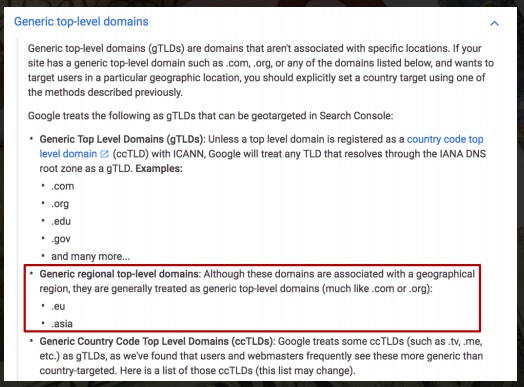

If you are required to use continent versions, implement as if they were gTLDs, enabling country subdirectories to be geolocated.
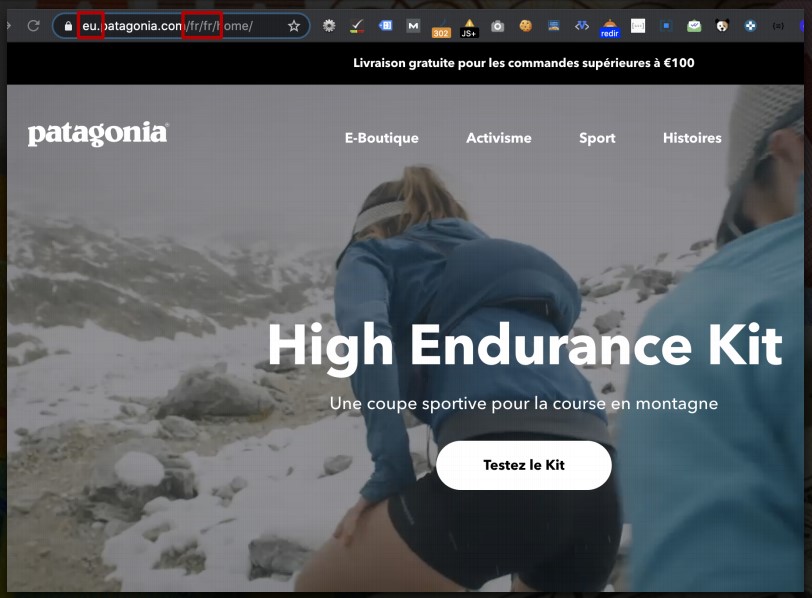

Otherwise, it may be difficult to geolocate your EU version and achieve a positive ROI.
Consider Allbirds’ situation.
They have a .eu version in English, but then they also have a .uk in English.
Realistically in Europe, the country that really searches in English is the U.K.
So which countries should .eu be tied to?
Most of these countries won’t search in English.
They will search in German, French, Spanish, and other languages.
So this European version is not necessarily attracting as much as it could if they were targeting specific countries.
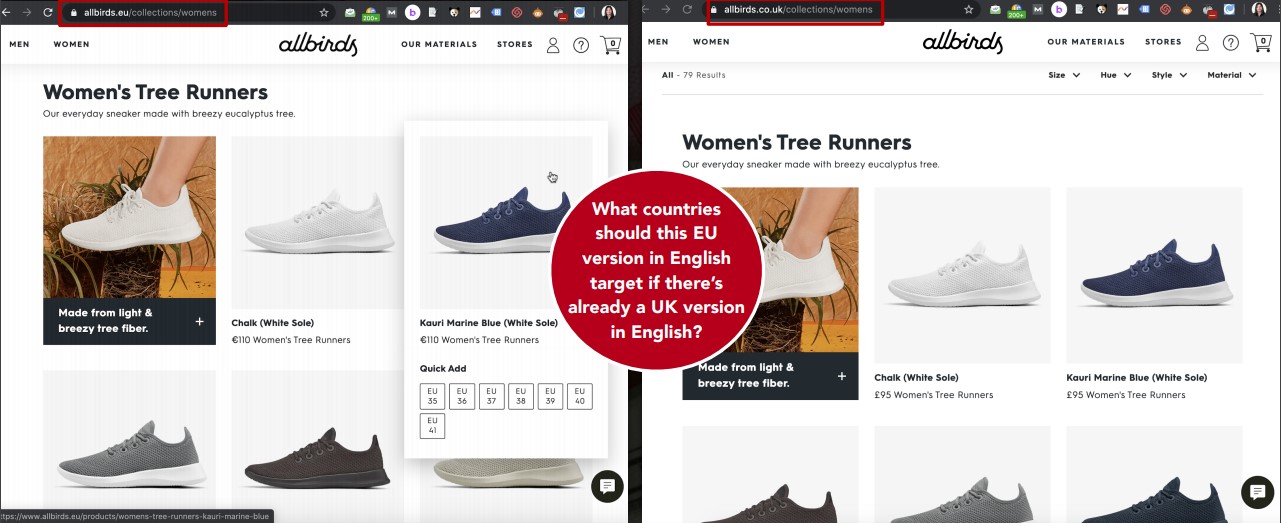

How to Implement These International Web Structures in the Most Popular Ecommerce Platforms
Shopify
Shopify supports multi-language targeting, relying on translation apps and compatible themes.
You’ll need a few Freemium apps like Translation Lab and Weglot.
The tools allow you to enable subdirectories for each targeted language via the translation app in the store admin.
However, Shopify doesn’t support a “multi-country” configuration.
You’ll need to create independent stores to geolocate via subdomains or independent domains.
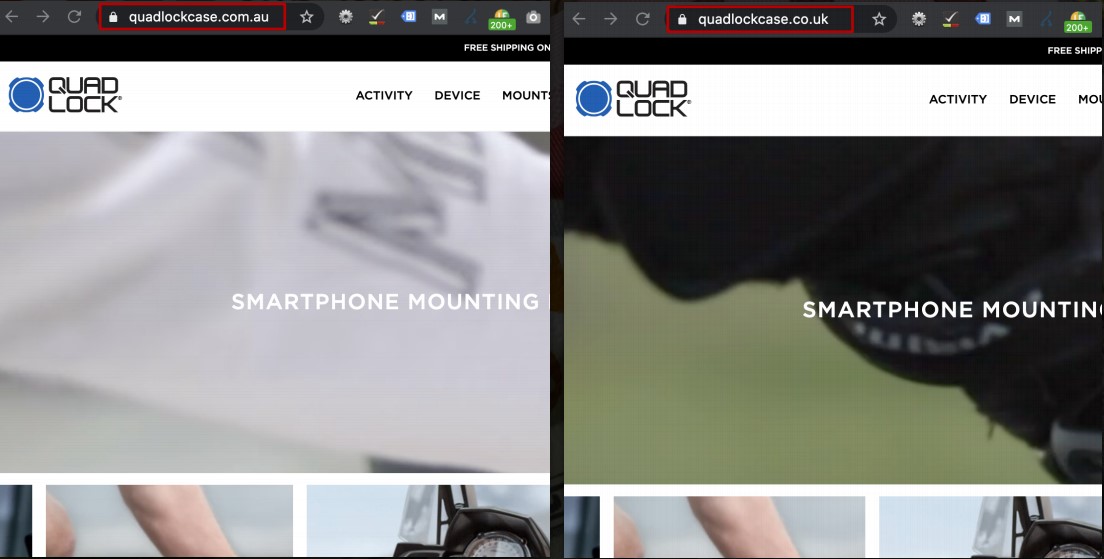

WooCommerce
WooCommerce has WordPress multilingual and multi-country plugins support, so there’s more flexibility to target multiple countries or languages.
Many of these multilingual plugins offer specific WooCommerce integration.


They allow you to select from subdirectories, subdomains, or domains for international versions – supporting also country versions, besides languages.
Magento
Magento also supports multilingual and country stores versions through different “Stores” or “Store Views”, for which you can use different domains, subdomains or subdirectories.


How to Scale Categories & Products Content Localization with Little Resources
Going native can make or break global sales.
The localization of your content is key to connect with your international audience preferences/behavior.
The goal is to localize the different user-facing areas of your shop, from URLs, navigation, metadata, descriptions, slogans, and notifications, among others.
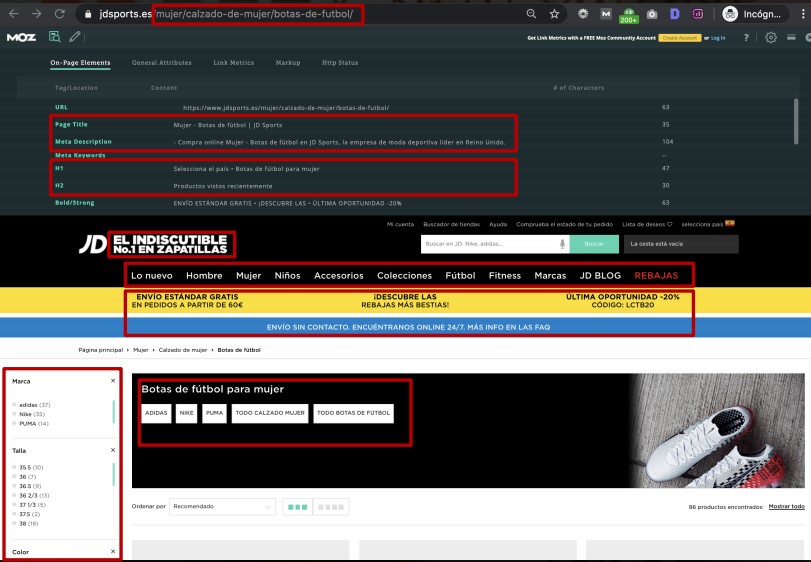

This example from Adidas shows how their U.S. and U.K. categories differ.


But how can you do it with dozens of countries, hundreds of categories, and thousands of products?
It’s about having an iterative/incremental approach, from translation to localization up to transcreation, aligning it within your ecommerce international SEO process based on your available resources.
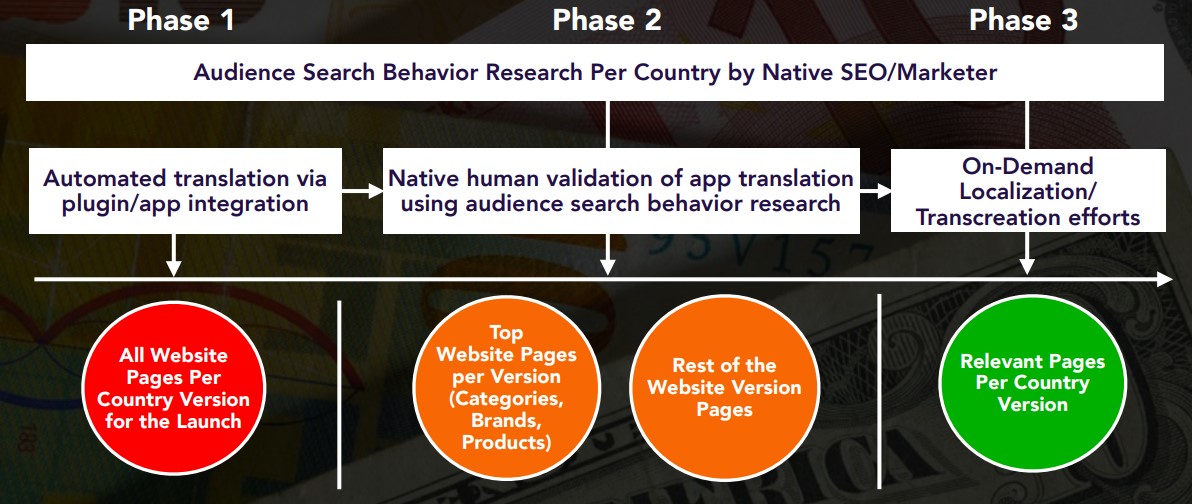

Establishing multi-country patterns to generate the main content elements for each page type.
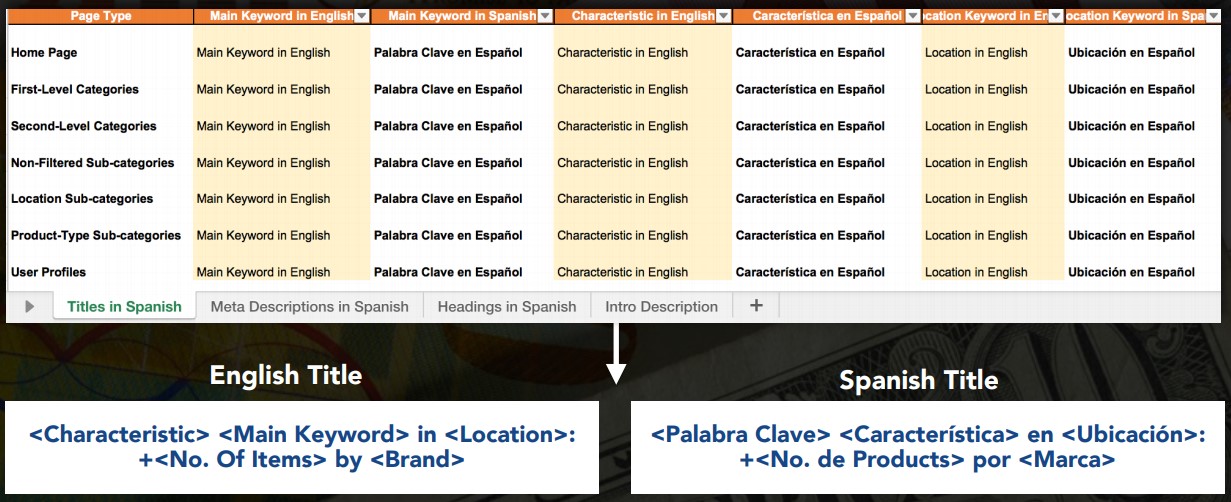

How to Follow This Process with the Most Popular Ecommerce Platforms
Today, it’s now possible to leverage the highest quality of new generation, AI-based translation solutions like DeepL.
Some of these tools will also offer integration with CAT tools for translators to accelerate their work.
Shopify
These platforms also have supported third-party translation apps featured in apps/plugins marketplaces, like Translation Lab for Shopify that offers direct Automated Translations.


Magento
Something similar happens with Magento translation and localization extensions, although most of these are paid (not-freemium, unlike Shopify).
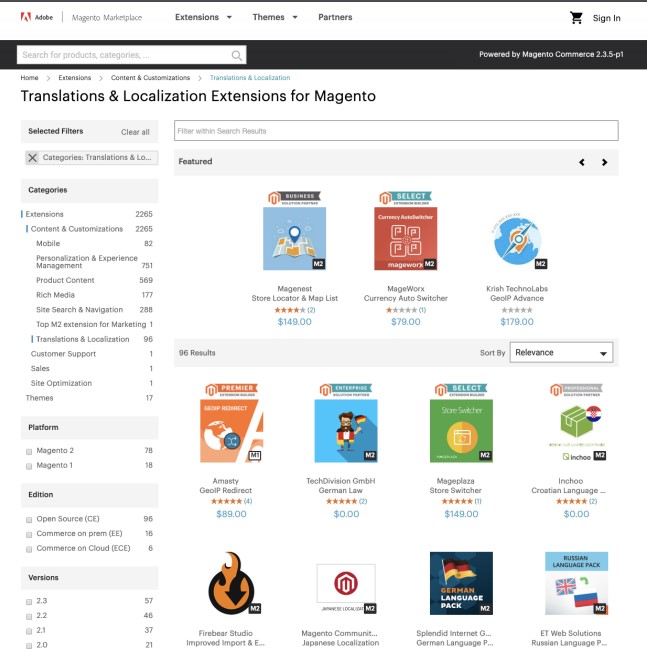

WooCommerce
The same is also available to WordPress/WooCommerce translation plugins which allow manual translations by default.
You can also integrate with third-party translation solutions, both automated and on-demand services.
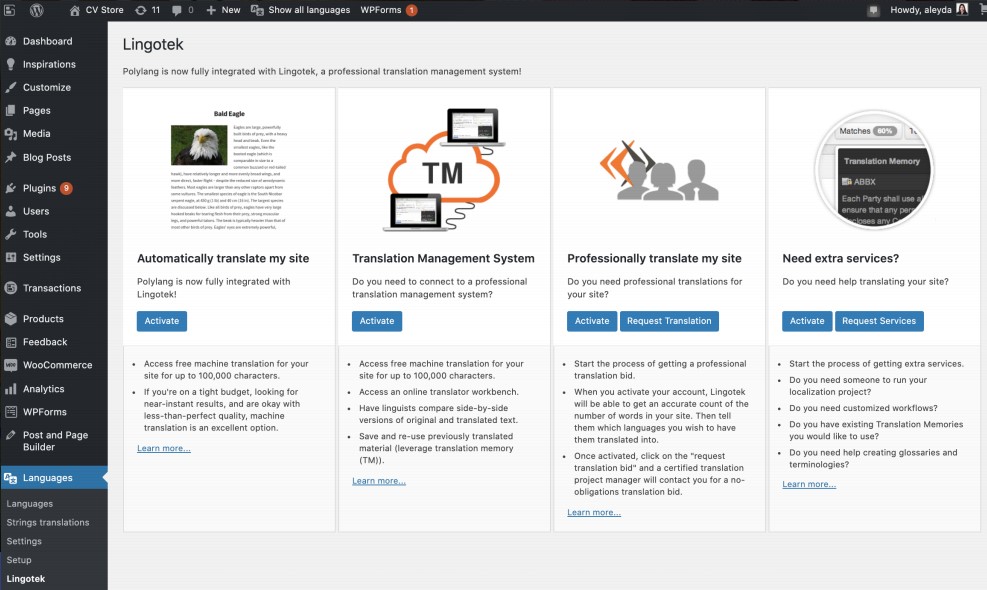

The most powerful solutions like DeepL offer paid APIs and plugins that facilitate connection with WordPress/WooCommerce multilingual plugins too.
How to Implement Hreflang to Rank with the Right Pages Without Triggering Errors When You Have Millions of URLs?
The goal of hreflang annotations is to specify which is the relevant page version that should be shown in each country/language market in search results to avoid misalignment.
Indexable URLs in different languages and countries versions should be tagged with their relevant values.


They can be implemented via the HTML head, HTTP header, or XML Sitemap.
Each has its pros and cons:
- HTML Head: Better for a small number of versions to tag and when using a platform that easily edits the HTML head.
- XML Sitemap: Better for bigger sites with a high number of versions to tag and/or when you can’t edit your HTML head.
- HTTP Header: When specifying hreflang for non-HTML documents like PDFs, docs, etc.
Unfortunately, implementing hreflang annotations without triggering errors is also complex.
As Google’s John Mueller puts it:
TBH hreflang is one of the most complex aspects of SEO (if not the most complex one). Feels as easy as a meta-tag, but it gets really hard quickly.
— 🍌 John 🍌 (@JohnMu) February 19, 2018
The complexity comes from every page needing to include its language and country targeting, and point to its other versions.
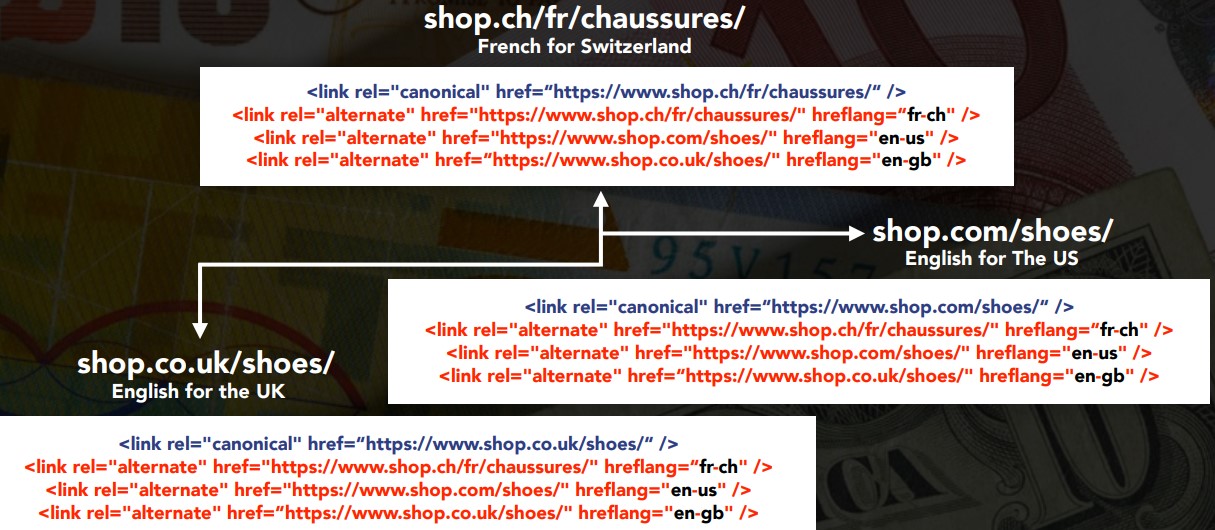

It can easily become a complex implementation in scenarios that are found in ecommerce sites, including:
- A high number of URLs per country/ language version.
- A highly dynamic inventory of products.
- A lack of parity between products and collections between international markets.
It’s then critical to prioritize hreflang implementation based on your characteristics and needs.
This flowchart can help you decide how to approach hreflang:


Use the Search Console and Analytics, or an SEO tool of choice, to identify if your pages are ranking in nonrelevant markets (e.g., UK pages in the U.S.).
How Can You Implement Hreflang Annotations in the Most Important Ecommerce Platforms?
WooCommerce
WordPress/WooCommerce multilingual plugins include hreflang if there are alternate pages versions for that URL.
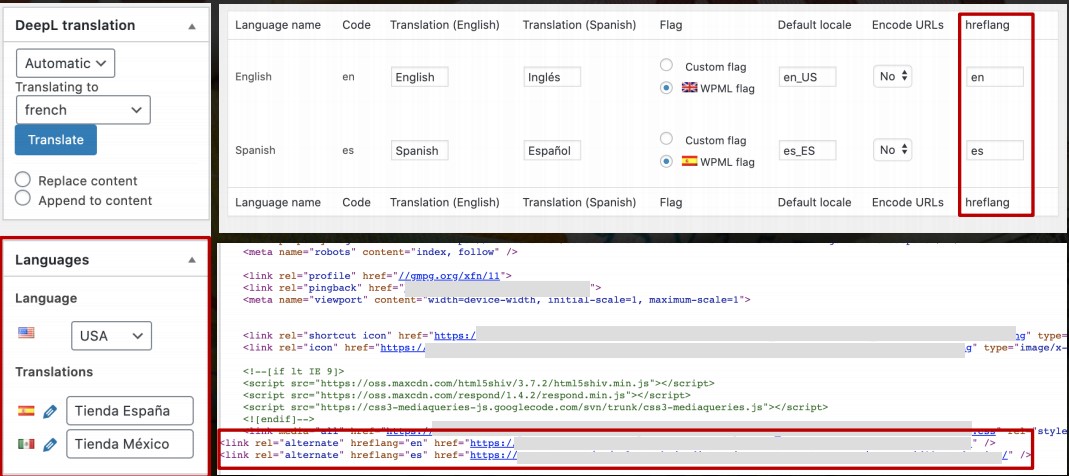

Magento
Hreflang is also supported by Mageworx Magento 2 SEO extension that allows you to specify in which types of pages they should be included, as well as values.
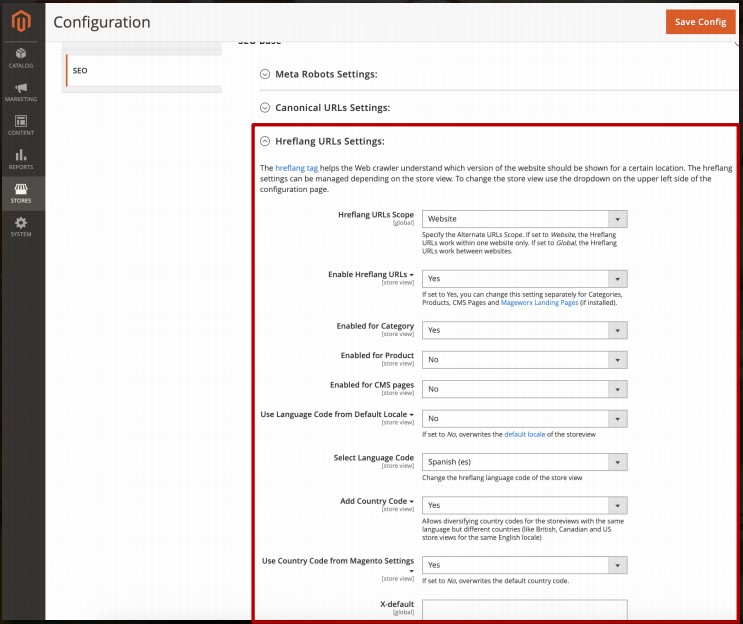

Shopify
Shopify allows to edit the theme.liquid layout page to include hreflang pointing to each version canonical URLs.
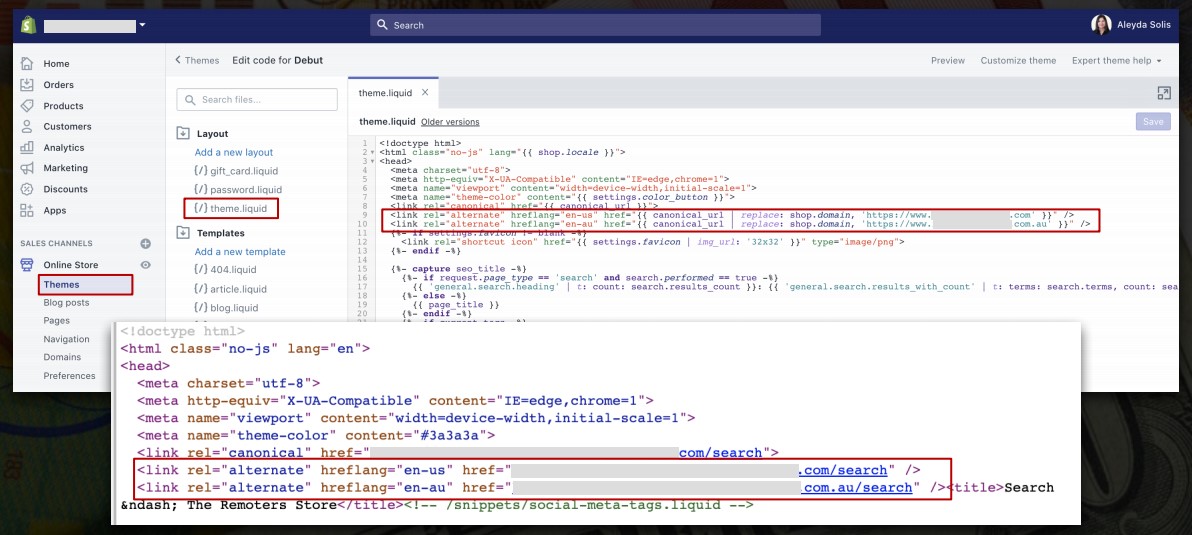

Other Considerations
If you want further flexibility and implement hreflang annotations via XML Sitemaps, you can use also paid solutions like the Hreflang Builder.
You should also crawl the implementation before and after releasing it to identify potential hreflang validity issues. Tools such as Ryte and Sitebulb are good for this.
Setting alerts to warn you whenever hreflang configurations are changed is also important. You can use tools such as ContentKing and Little Warden to keep you updated.
To Sum Up
By following these steps you’ll avoid the most common international SEO challenges for ecommerce.
- Selecting the best international web structure to target the new markets.
- Scaling your categories and products’ content localization with little resources.
- Implementing hreflang to rank with the right pages without triggering errors.
Also, make sure to take into consideration the features and constraints of the most popular ecommerce platforms to successfully scale and diversify your conversions across different countries and languages.


Watch this Presentation
You can now watch the video of Solis’ full presentation from SEJ eSummit.
More Resources:
- Global vs. Local Websites: Which Is Right for You?
- How Ecommerce Businesses Can Prepare SEO & Content for Post-COVID-19
- Ecommerce Marketing: The Definitive Guide
Image Credits
Featured Image: Paulo Bobita
All screenshots taken by author, August 2020

Sorry, the comment form is closed at this time.